(Monterosato, 1879)
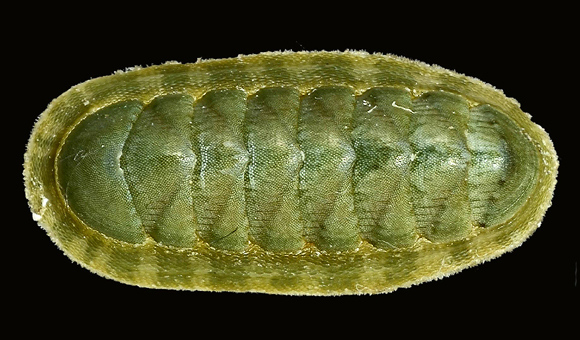
On rock and stones, in the infralittoral. Grazer.
Basionym: Chiton phaseolinus.
The species is narrower than corallina or olivacea, and differs also by its uniform colour. – Above and below: a green specimen from Aci Trezza, Aci Castello, Catania, E. Sicilia. 11mm. Original pictures provided by A. Brancato (IT).
– (CC BY-NC-SA) –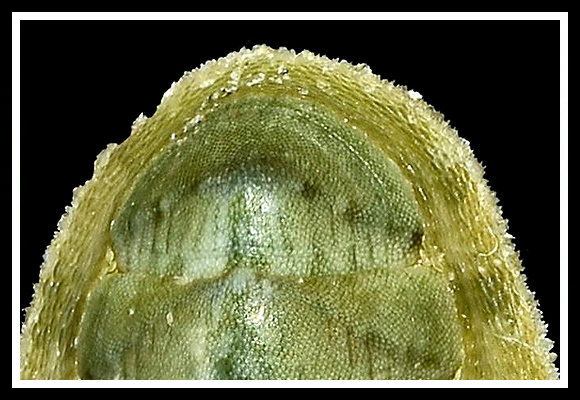
« Colour uniformly light green, tending sometimes to lighter tonality, brownish, or even reddish. Girdle moderately wide, of similar uniform coloration, but lighter. Head valve semicircular, front slope weakly convex, posterior margin widely V-shaped. » – Crocetta & al.: “Biogeographical homogeneity in the eastern Mediterranean Sea - III. New records and a state of the art of Polyplacophora, Scaphopoda and Cephalopoda from Lebanon”, Spixiana Bd.37(2), München 2014, p.188.
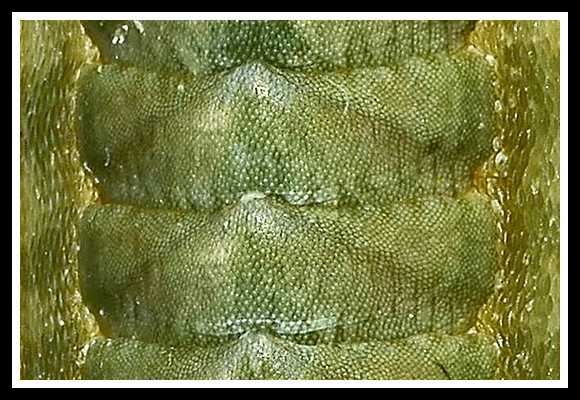
« Intermediate valves subrectangular, rounded, anterior margin straight to weakly convex, lateral margins rounded, posterior margin straight with barely evident apex, lateral areas hardly elevated and hardly separated from central areas. » – Ibid.
The dorsum is not carinate as in corallina or olivacea, but rounded.
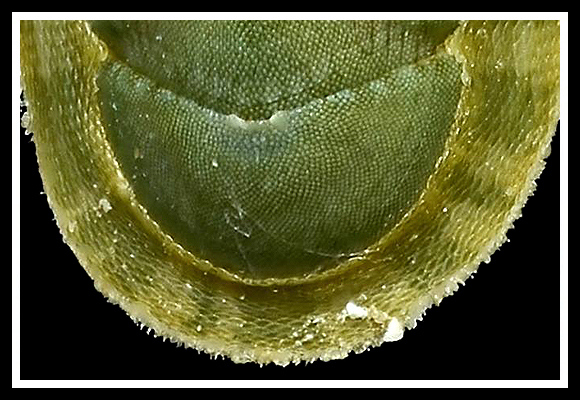
« Tail valve semi-elliptic, anterior margin convex, mucro scarcely evident in anterior position. Anterior valve, lateral areas of intermediate valves, and postmucronal area of tail valve smooth, while pleural areas sculptured on each side by 5-8 longitudinal outward-leaning grooves, of which only first two or three reach the anterior margin. Articulamentum with apophyses wide, triangular, tending to trapezoidal in tail valve, connected by short, finely denticulate jugal plate… » – Ibid.
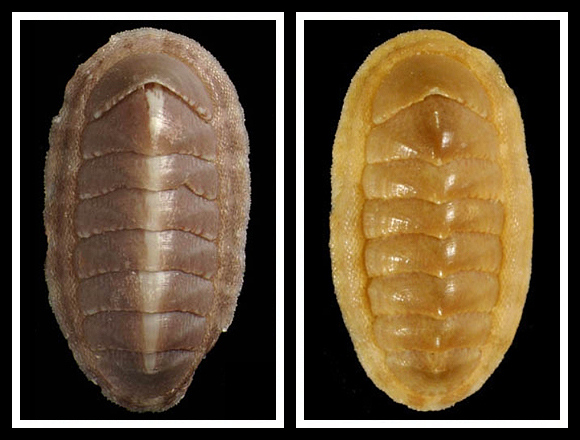
Left: Isla de Tarifa, Andalucia, S. Spain. 11,5mm.
Original picture provided by S. Gofas.
Right: Punta del Carnero, Getares, Andalucia. 11mm.
Original picture provided by J. Trausel & F. Slieker.
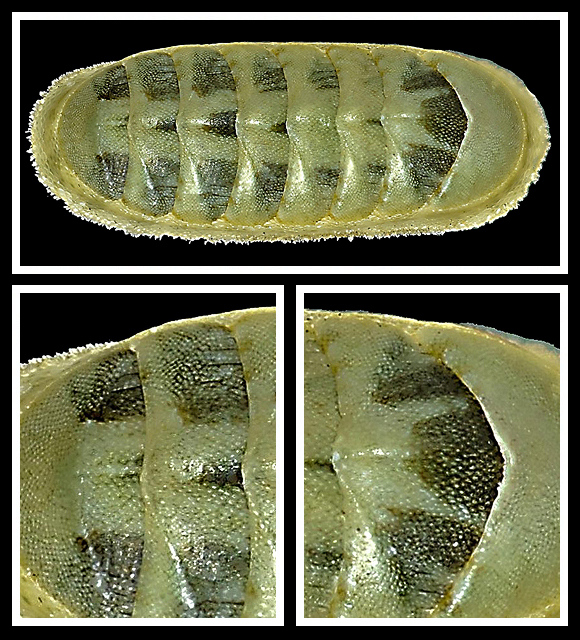
Original picture provided by A. Brancato (IT).
– (CC BY-NC-SA) –